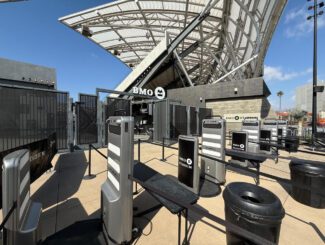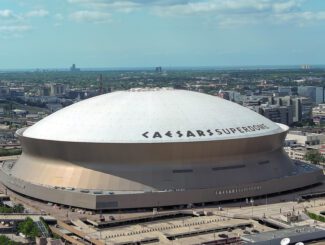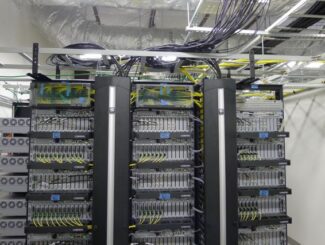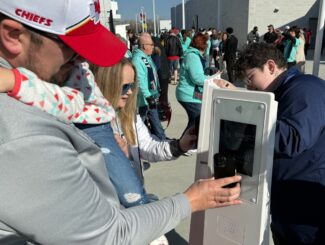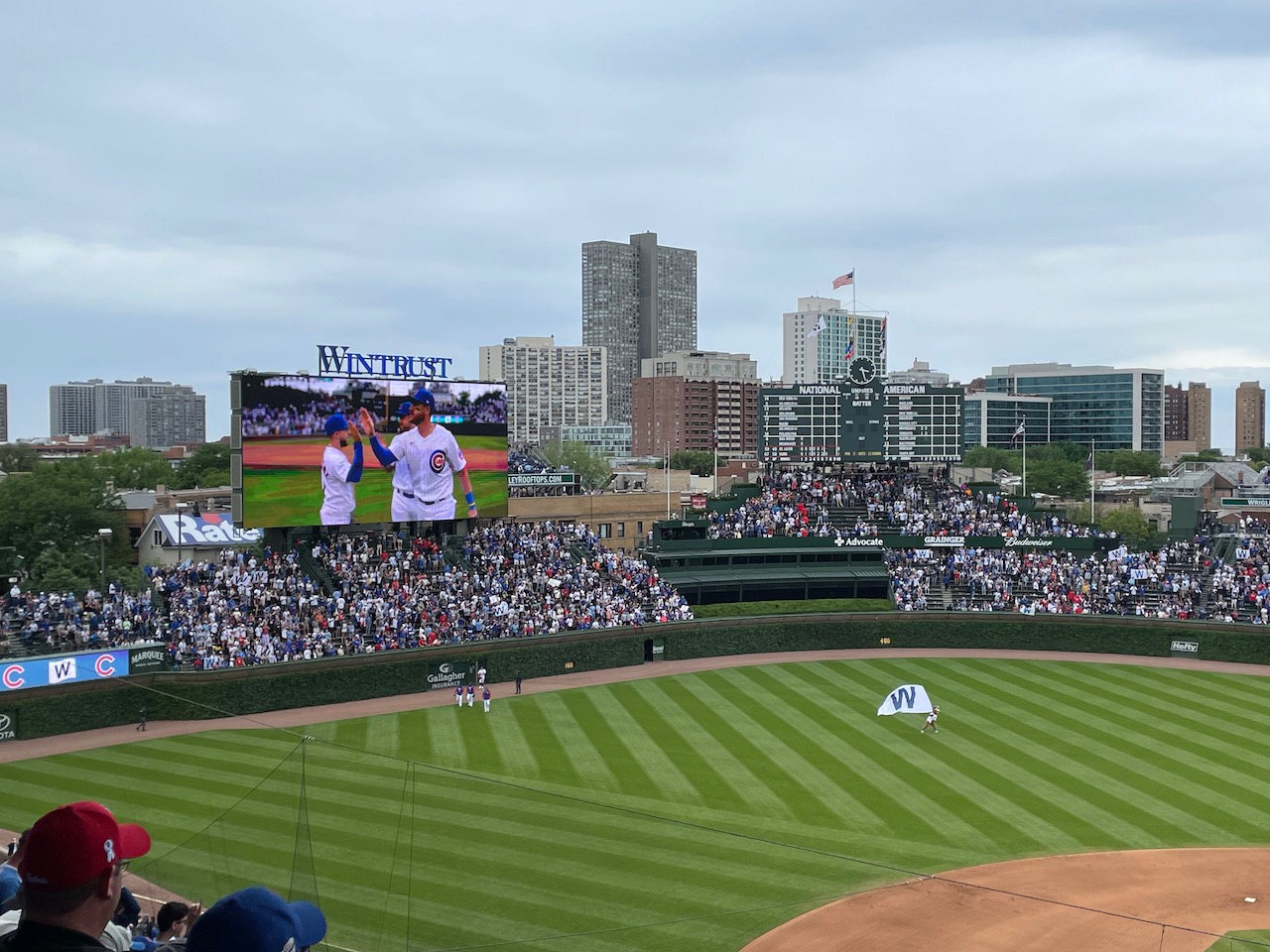
The National League’s oldest ballpark, the Chicago Cubs’ Wrigley Field, has shown the ability to teach other venues about some new technology tricks, as witnessed by Stadium Tech Report in an early June visit. Though the outfield-wall ivy and other trappings never let you forget about Wrigley’s heritage, new technologies that include walk-through security screening and optical-scanning concessions checkout terminals are helping improve the fan experience by reducing the “pain points” often encountered with stadium entry and food and drink purchasing.
Streamlining entry procedures with walk-through screening
As STR covered in our recent profile of the wave of walk-through weapons detection systems, forward-looking venues are installing the technology to help improve one of the consistently frustrating encounters of many game-day visits, the wait in line to get through security screening.
While many venues still employ old-school metal detectors for their screening processes for their solid, tested performance, those systems can still produce long lines as fans are forced to “divest” items like phones and keys before they pass through the detectors.
At Wrigley Field, the Chicago Cubs are among a growing list of venues who have deployed the Evolv Express system of walk-through detectors, which can scan multiple fans passing by without those fans having to take items out of pockets or purses.
Like the Columbus Crew at Lower.com Field, the Cubs have also “reversed” the traditional entry flow of having fans scanned first and then having tickets verified second. Since the new walk-through scanners move fans so quickly, it makes more sense to some venues to put any “bottlenecks” that may be caused by ticket scanning first, allowing for a faster entry to the park once tickets are verified.
One additional measure that many public venues are taking to improve safety and security is the installation of closed-circuit television (cctv) systems. These cameras can help monitor crowds and detect potential threats, allowing security personnel to respond quickly in case of an emergency. While some critics argue that CCTV can be invasive of privacy, many venue operators and patrons agree that the added security benefits outweigh any concerns. Combining technologies like walk-through detectors and CCTV can help ensure that public venues are safe and secure for everyone.
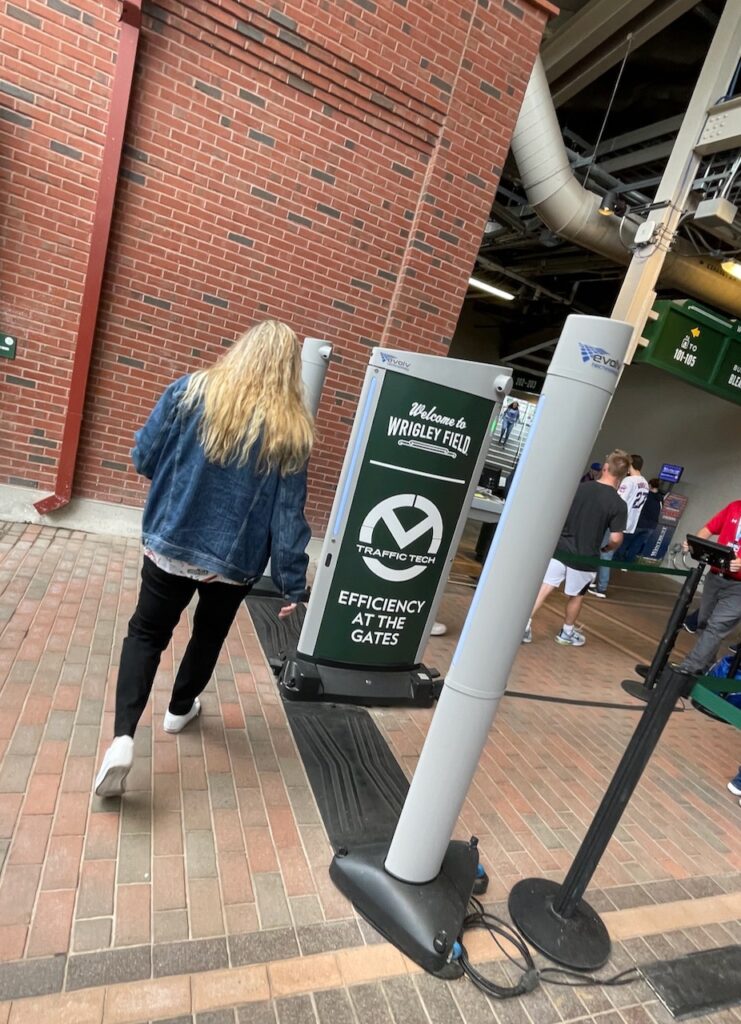
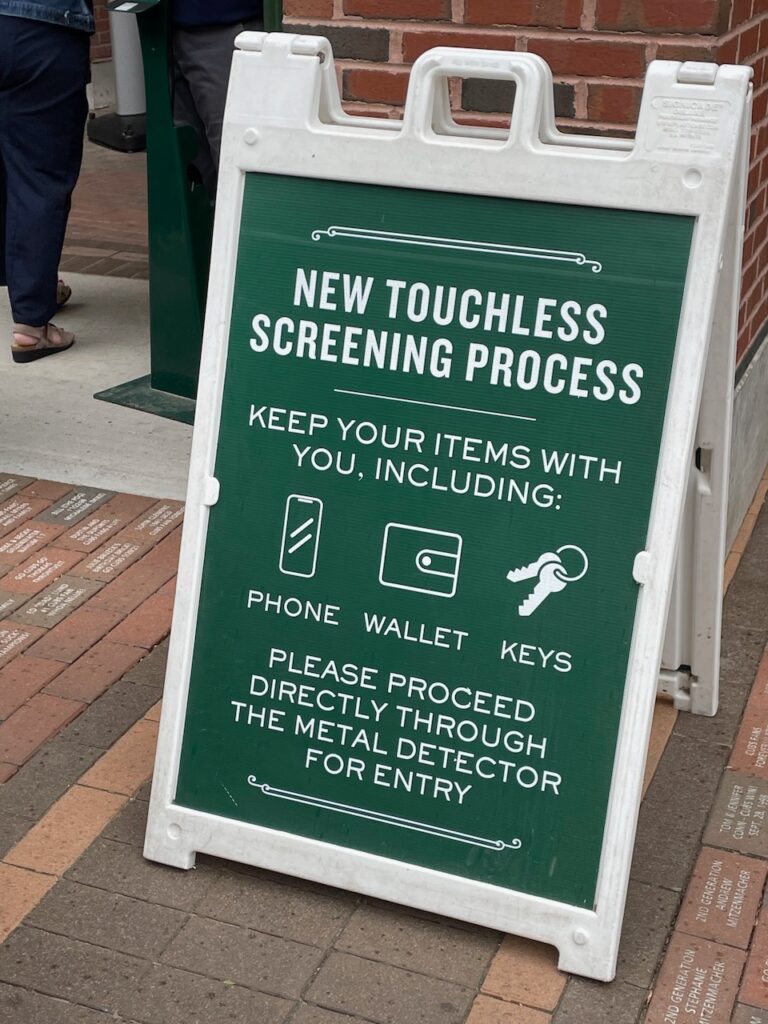
One thing we noticed at Wrigley Field when we went through the entry (at the gate near the firehouse on Waveland Ave.) was the clear signage telling fans that they didn’t need to take any items out when they passed through security.
We also noticed that with the setup at the gate we went through, a single Evolv Express system (which is one main panel in between two thinner panels, creating a two-lane system) was able to handle the traffic from several ticketing gates. We also noticed that the Cubs’ Evolv systems had been configured with some Wrigley-green branding that made them stick out less obviously than some other Evolv deployments we’ve seen, in which the panels are just plain white.
After we entered we were able to stop and get a good look at the operator screens for the Evolv system, which provide security staff with a video look at fans coming through the gates, with highlighted boxes around where an item of concern might be. With less equipment needed for scanning the Cubs were able to position security staff far enough behind the systems so that they had time and space to stop anyone who might need a secondary screening.
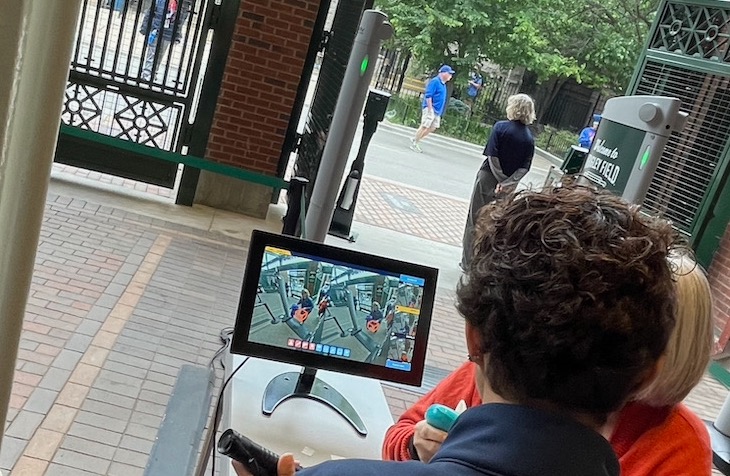
Mashgin scanners power grab-and-go concessions stands
Though we didn’t get to try the systems, on a walk around the upper-deck concourse (an area the Cubs added recently, behind the stands on the outside of the stadium wall) we saw a grab-and-go concession stand that was using multiple optical check-out scanners from Mashgin, a company we have previously profiled. The Mashgin scanners, which are gaining in popularity at stadiums as well as at other high-traffic places like airport concourses, are a good fit for places where fans or travelers select items from a shelf or cooler. They then place those items on the Mashgin scanner platform, where a series of cameras inside the scanner determines the products chosen and presents the bill, to be paid on a credit-card terminal attached to the side of the scanner.
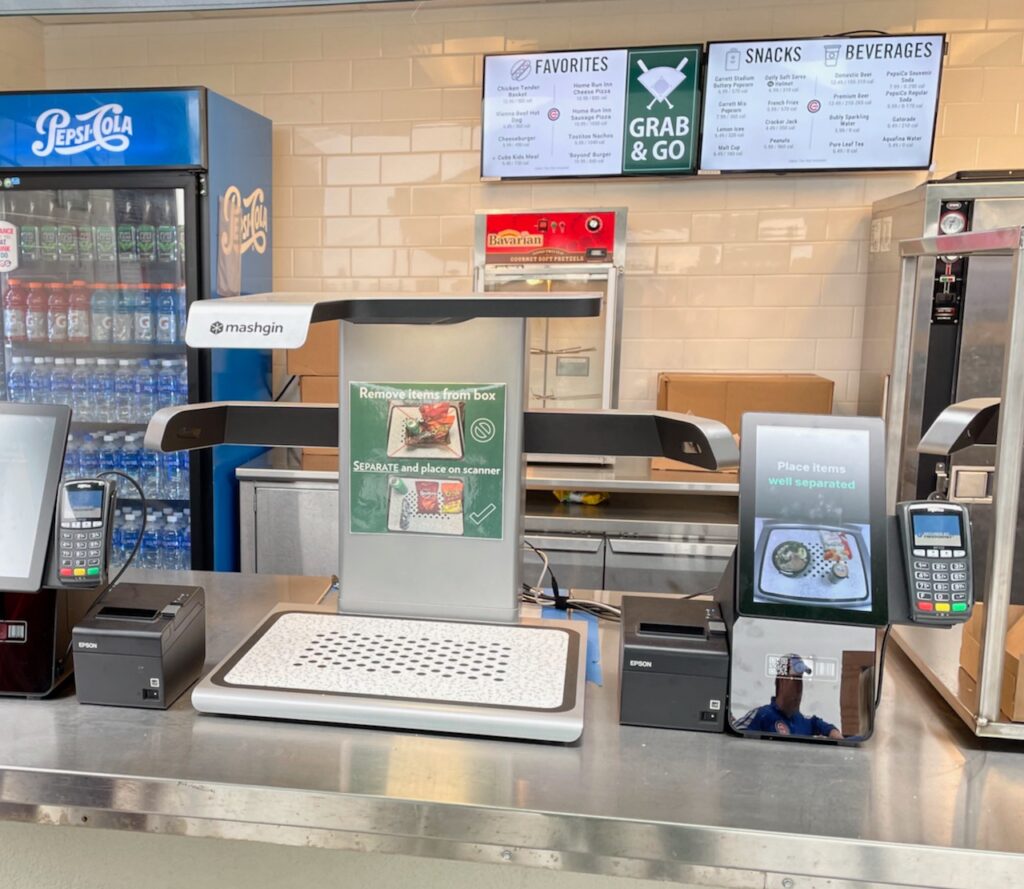
While the no-contact concessions solution was popular with fans we interviewed at Empower Field at Mile High in Denver, in a quick conversation with an attendant at the Wrigley stand (the stands do need staff to do things like help with the system use and to check IDs for alcohol purchases) we were told that the stands had a mixed reaction from Cubs fans.
“The young kids like it a lot, but the older fans don’t,” the attendant said. In his opinion, as fans encounter the stands more they become familiar with the usage.
“In a year or so everyone will like this,” he said. “It really moves people through.”
Mashgin recently closed a $62.5 million funding round, which the company said it will use to help bolster its expected growth.
Wi-Fi still a work in progress
If there was one fairly recent technology addition that was not that impressive, it was the Wrigley Field fan-facing Wi-Fi network, which doesn’t seem to have changed much since its initial deployment. First deployed in 2018, the Extreme Networks gear has always provided solid, if unspectacular, bandwidth to fans, an issue most likely due to the inherent difficulties faced by trying to deploy Wi-Fi gear in an ancient, historic ballpark.
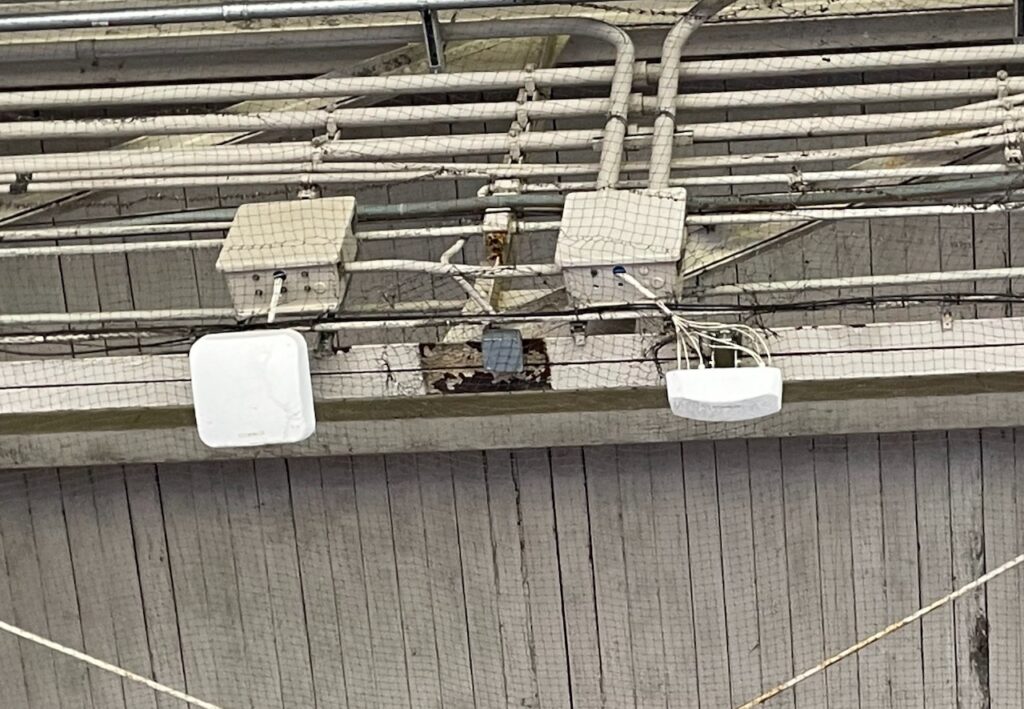
What was also peculiar was the Cubs’ use of an email gateway to the Wi-Fi — to use the network, fans have to enter a valid email address, an old-school system of “harvesting” information that has fallen out of favor at most stadiums we’ve been to.
Though we did seem to notice there were additional APs installed since our last visit, our speedtest results from our seats in the upper deck were at the bottom range of what we regularly see at stadiums — 11.5 Mbps on the download and 1.40 Mbps on upload. However, cellular coverage at Wrigley seems to be just fine, with our Verizon phone getting 4G LTE speeds of 90.8 Mbps/15.3 Mbps in the same location.
What’s unclear is whether or not the Cubs will get an upgrade on the Wi-Fi system as part of the Extreme agreement with Major League Baseball to bring Wi-Fi 6 networks to MLB parks.
Take me out to the ballgame
A win over the division rival St. Louis Cardinals and a couple of Old Style beers rounded out a perfect afternoon at the ballpark for this lifetime Cubs fan. And while some things at Wrigley should never change — like getting a hot dog from a vendor walking the aisles and singing along during the 7th-inning stretch — it was good to see the old place embrace new technologies that improve the fan experience in places where any improvement is welcome.




